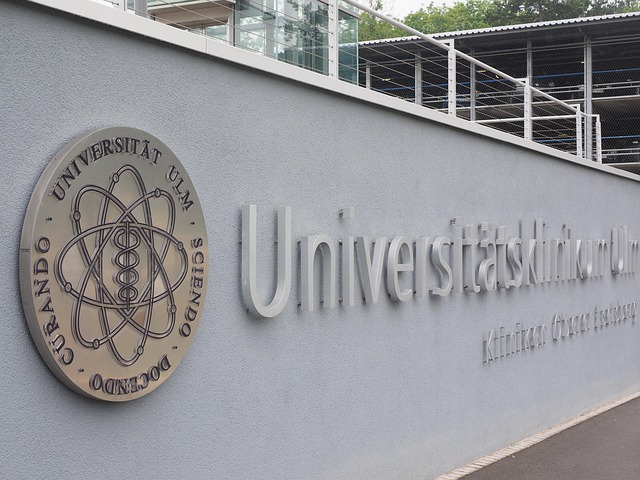Global Harmonization of University Regulations: Navigating Diversity and Digital Era
University Regulations and Policies (URPs) vary globally due to diverse legal frameworks and cultural norms. Standardization is crucial for fairness, equality, and clarity in today's globalized education sector. Digitization enhances accessibili…….

University Regulations and Policies (URPs) vary globally due to diverse legal frameworks and cultural norms. Standardization is crucial for fairness, equality, and clarity in today's globalized education sector. Digitization enhances accessibility and transparency, while translation bridges cultural gaps. Global initiatives promote unified enforcement strategies, fostering international partnerships and equitable student experiences. Universities prioritize inclusivity and transparency in URPs, empowering students and enhancing the academic community worldwide.
University regulations and policies, though vital for institutional control, often pose a global challenge. With institutions scattered across borders, interpreting and enforcing these rules consistently is complex. This article delves into the intricacies of translating university regulations and policies worldwide, exploring strategies to standardize interpretations, bridge cultural gaps, and leverage technology for accessibility. We examine key areas such as diversity and inclusion, digital transformation, and global collaboration, offering insights into navigating legal differences and promoting transparency in access and inclusion.
- Understanding Global University Governance
- Standardizing Policy Interpretation Across Borders
- Bridging Cultural Gaps in Academic Rules
- Streamlining International Student Compliance
- Ensuring Fairness in Diversity and Inclusion Policies
- Digital Transformation of University Regulations
- Global Collaboration for Consistent Enforcement
- Navigating Legal Differences in Disciplinary Procedures
- Promoting Transparency in Access and Inclusion
- The Role of Technology in Policy Accessibility
Understanding Global University Governance
Universities worldwide operate within a complex web of regulations and policies that vary significantly from one country to another. Understanding global university governance involves navigating through diverse legal frameworks, cultural contexts, and institutional traditions. Each nation’s higher education system is shaped by its history, political structure, and societal values, leading to distinct approaches in managing academic institutions.
University Regulations and Policies serve as the cornerstone of global university governance. They dictate everything from student admission procedures and academic standards to faculty hiring practices and research ethics. By adhering to these regulations, universities ensure fairness, transparency, and accountability in their operations. Moreover, they foster a sense of consistency and predictability for students, faculty, and staff, contributing to a positive learning and working environment.
Standardizing Policy Interpretation Across Borders
In a globalized educational landscape, where students and faculty frequently cross borders for study and work, standardizing the interpretation of university regulations and policies is more critical than ever. Traditionally, each institution has its own set of rules and guidelines, often shaped by local laws and cultural norms. However, with international enrollment on the rise, there’s a growing need to harmonize these policies to ensure consistency in student experiences regardless of their educational journey.
Standardization facilitates fairness and equality among students from diverse backgrounds. It also streamlines administrative processes for both universities and students, reducing confusion and potential legal complexities. By establishing clear, universally accepted guidelines, institutions can foster an inclusive environment that respects individual rights while maintaining institutional integrity.
Bridging Cultural Gaps in Academic Rules
In today’s global academic landscape, universities often find themselves grappling with the challenge of harmonizing diverse cultural norms within their policies and regulations. University regulations and policies are more than just sets of rules; they reflect the values and expectations of each institution’s unique community. When translating these documents for an international audience, it becomes evident that bridging cultural gaps is essential to ensure clarity and fairness.
One of the primary considerations is understanding that academic traditions vary widely across countries. What is considered acceptable behavior or assessment practice in one culture might differ significantly from another. Therefore, when localizing university regulations, it’s crucial to involve faculty, staff, and students who can provide insights into these cultural nuances. This collaborative approach helps create a more inclusive environment, respecting the diversity of practices while maintaining institutional integrity.
Streamlining International Student Compliance
Navigating university regulations and policies can be a complex task, especially for international students who may be new to academic expectations in their host country. Streamlining compliance processes is vital to ensure a smooth transition for these students. Universities worldwide are recognizing the importance of simplifying and translating these essential rules and guidelines to facilitate understanding among their diverse student body.
By providing clear, accessible versions of university regulations and policies in multiple languages, institutions can empower international students to make informed decisions about their academic journey. This proactive approach not only helps students avoid potential pitfalls but also fosters a sense of community and support. It allows students to quickly integrate into campus life, focus on their studies, and fully embrace the unique opportunities offered by their host university.
Ensuring Fairness in Diversity and Inclusion Policies
In the realm of university regulations and policies, ensuring fairness is paramount when addressing diversity and inclusion. Global institutions must strive to create an environment where every student, faculty, and staff member feels valued and included, regardless of their background or identity. This involves implementing robust policies that actively promote equal opportunities and prevent discrimination.
Universities worldwide can achieve this by adopting inclusive language in their regulations, fostering cultural sensitivity through diversity training programs, and establishing clear channels for reporting and addressing incidents of unfair treatment. Additionally, they should regularly review and update their policies to reflect the evolving understanding of fairness, ensuring that every aspect of university life upholds the highest standards of inclusivity.
Digital Transformation of University Regulations
The digital age has brought about a significant transformation in how university regulations and policies are managed, accessed, and updated. Traditional paper-based systems are being replaced by robust online platforms, ensuring a more efficient and transparent process for students, faculty, and administrators alike. This digital transformation is not just a convenience; it enhances accessibility by allowing stakeholders to view and interact with university rules and guidelines from anywhere at any time.
The transition to digital university regulations offers numerous benefits. It streamlines procedures, reduces errors, and enables real-time updates, ensuring everyone operates under the most current information. Moreover, digital systems can facilitate better data analysis, providing insights into trends and patterns within institutional policies that were previously difficult to uncover through manual methods. This data-driven approach can inform policy decisions, fostering a more adaptive and responsive academic environment.
Global Collaboration for Consistent Enforcement
In today’s globalized educational landscape, universities worldwide are recognizing the importance of a consistent approach to enforcement, particularly regarding university regulations and policies. This need for standardization has led to an exciting trend of international collaboration. Educational institutions are forming partnerships to ensure that their rules and guidelines are not only universally applicable but also effectively implemented across borders.
Through these collaborations, universities can share best practices, learn from each other’s experiences, and develop innovative strategies to tackle common challenges in regulation enforcement. This collective effort promises a more uniform student experience while allowing institutions to adapt policies to diverse cultural contexts. Such global initiatives are pivotal in creating a harmonious and equitable environment for students, faculty, and staff across different nations.
Navigating Legal Differences in Disciplinary Procedures
Universities worldwide operate within diverse legal frameworks, leading to significant variations in disciplinary procedures. When translating university regulations and policies, it’s crucial to understand these differences to ensure fairness and consistency across institutions. The specific legal traditions and educational systems of each country shape the way universities handle misconduct, from defining acceptable behavior to establishing disciplinary bodies.
For instance, some countries emphasize administrative processes with clear guidelines and appeals mechanisms, while others take a more judicial approach, closely mirroring court procedures. Translators must be adept at navigating these nuances to accurately convey the intended meaning and purpose of university regulations, ensuring that the translated documents are effective and applicable in their target context.
Promoting Transparency in Access and Inclusion
Universities worldwide are increasingly recognizing the importance of promoting transparency and inclusion within their regulations and policies. This shift is driven by a desire to ensure equitable access to education for all, regardless of background or identity. By making university regulations clear and accessible, institutions can foster an environment where students feel empowered to understand and participate in decisions that affect them.
Transparency in university policies encourages open dialogue and collaboration between administrators, faculty, staff, and students. It ensures that everyone involved has a shared understanding of expectations, rights, and responsibilities. This inclusivity is vital for creating a diverse and dynamic academic community where different perspectives are valued and respected, contributing to the overall enhancement of the educational experience.
The Role of Technology in Policy Accessibility
In today’s digital era, technology plays a pivotal role in enhancing accessibility to university regulations and policies for students worldwide. Online platforms and institutional websites have become the primary source for students to access important policy documents, ensuring transparency and convenience. By digitizing these regulations, universities can reach a global audience, allowing students from diverse countries to stay informed about academic expectations, disciplinary procedures, and rights.
This digital transformation facilitates easy navigation and search functions, enabling students to quickly locate specific policies relevant to their inquiries. Moreover, online resources often incorporate interactive features like PDFs with clickable links, embedded videos explaining key provisions, and feedback mechanisms for student input, fostering a more inclusive and user-friendly policy accessibility framework.
University regulations and policies, while essential for maintaining order and quality in education, can be complex and vary significantly across borders. As institutions strive for global connectivity and diversity, understanding and standardizing these policies become paramount. By bridging cultural gaps, streamlining compliance processes, and leveraging digital transformation, universities worldwide can create a more inclusive and accessible environment for students and faculty alike. Global collaboration ensures consistent enforcement, promoting fairness, transparency, and ultimate success in navigating the diverse landscape of academic governance.





